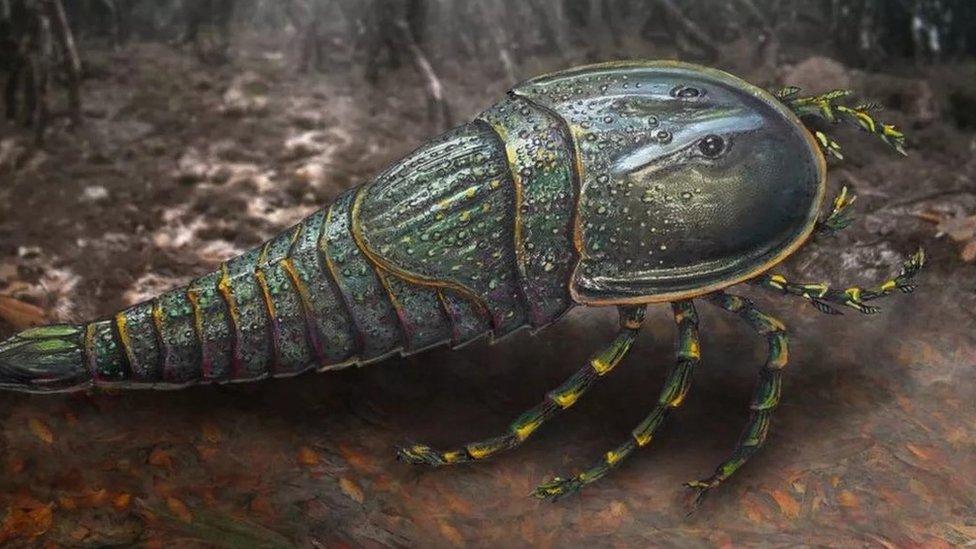Huge ancient sea scorpion species discovered
- Published
- comments

Meet the Woodwardopterus freemanorum - a monstrous sea scorpian!
A new monstrous species of ancient sea scorpion has been discovered in a museum in Australia.
According to researchers who discovered it, the Woodwardopterus freemanorum was a "massive monster" living in rivers and lakes of Queensland, Australia, 252 million years ago - and is thankfully now extinct!
The new species was identified by researchers at Queensland Museum who had been curious about the mysterious fossil that had been at the museum since 2013, but hadn't been properly looked at until the museum locked down due to coronavirus.
"When the fragmentary specimen came into our collection, it was initially placed in the 'too-hard basket' but the closures provided the opportunity to study and reassess some of our fossil collection and this particular fossil had always intrigued me," Dr Andrew Rozefelds, the Museum's geosciences curator said.
What were sea scorpions like?
This species of sea scorpion is called Terropterus xiushanensis - and was found in China.
Sea scorpions, or eurypterids as they're formally known, are an extinct group of invertebrates which belong to the same group of animals as modern day scorpions and spiders.
These ancient creatures existed hundreds of millions of years ago - before dinosaurs walked the Earth - and lived in seas, rivers and lakes.
Some could grow up to two metres long (the length of a horse!) and were one of the top predators of their time.
The Woodwardopterus freemanorum measures in at just over one metre in length, that's around 16 times bigger than your average scorpion today!
The researchers believe that the Woodwardopterus freemanorum fossil could have been the last one of its kind.
"After extensive research this particular fossil turned out to be the last eurypterid known from anywhere in the world. " said Dr Andrew Rozefelds.
"This new tantalising fossil helps fill the gap in our knowledge of this group of animals in Australia, and indeed world-wide."
- Published25 June 2021
- Published24 February 2016
- Published20 October 2021
